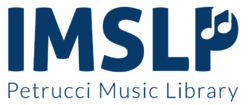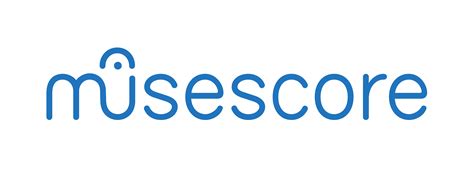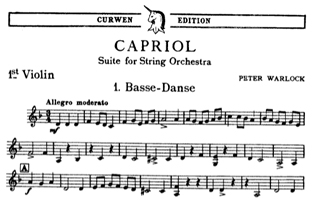On January 1, 2022 in the United States, Peter Warlock’s “Capriol Suite” for string orchestra marked its delayed entrance into the public domain. Published in 1926, it has finally cleared the benchmark of “96 years from publication” to be legally copied and distributed without a royalty payment. Prior to the United States Congress’ infamous 1998 “Sonny Bono Copyright Term” extension of its 1976 “Mickey Mouse Act,” the piece would have entered public domain in 2002. I have been holding onto an {ahem} illegal photocopy of the score since around 2010. Now I can finally introduce this piece to a student ensemble for just the cost of copy paper and printer toner.
The Queen of PD
 The mother of all public domain sheet music websites is IMSLP.org. Here is their page for the Capriol Suite. The world owes a debt of gratitude to IMSLP’s founder for his persistence in building this treasure trove of heritage music, over barriers thrown up by music publishers. Today there are 625,000 scores (and counting) on the site. Not just solo and chamber music, but all the parts to major orchestral works! I’ve used it to practice an orchestral part before I’ve been issued my hard-copy of the music. A $28/year subscription to the site helps you bypass a 15-second delay when accessing sheet music. Be sure to follow your country’s public domain restrictions before downloading any scores.
The mother of all public domain sheet music websites is IMSLP.org. Here is their page for the Capriol Suite. The world owes a debt of gratitude to IMSLP’s founder for his persistence in building this treasure trove of heritage music, over barriers thrown up by music publishers. Today there are 625,000 scores (and counting) on the site. Not just solo and chamber music, but all the parts to major orchestral works! I’ve used it to practice an orchestral part before I’ve been issued my hard-copy of the music. A $28/year subscription to the site helps you bypass a 15-second delay when accessing sheet music. Be sure to follow your country’s public domain restrictions before downloading any scores.
Cleanup on Aisle PD
 Sometimes, though, the scanned music posted on IMSLP is marked up, distorted, or even hand-written. While interesting from a historical point of view, these scans are not optimal for music study. For that, I subscribe to VirtualSheetMusic.com. Many popular student pieces have been freshly typeset, including suggested fingerings and bowings, with a title page and accompaniment included. There are also ensemble pieces and topical collections for busking and gigging, including Weddings, Christmas, Valentine’s Day, even Halloween! The first year’s subscription is currently $37.75, but I am usually offered a renewal price of $25.99. There’s also a native Virtual Sheet Music app for the iPad so you can load up sheet music and take it with you, saving trees!
Sometimes, though, the scanned music posted on IMSLP is marked up, distorted, or even hand-written. While interesting from a historical point of view, these scans are not optimal for music study. For that, I subscribe to VirtualSheetMusic.com. Many popular student pieces have been freshly typeset, including suggested fingerings and bowings, with a title page and accompaniment included. There are also ensemble pieces and topical collections for busking and gigging, including Weddings, Christmas, Valentine’s Day, even Halloween! The first year’s subscription is currently $37.75, but I am usually offered a renewal price of $25.99. There’s also a native Virtual Sheet Music app for the iPad so you can load up sheet music and take it with you, saving trees!
DIY PD
 What if you’re really picky about bowings and fingerings, and want to totally customize your public domain sheet music before printing it out? For that we head over to MuseScore.com. (If you haven’t already installed the free MuseScore program to do your own music notation, check that out first!) Here we’ll find a huge community of MuseScore users, sharing their fresh and editable engravings with the world. Do you want to personalize the bowings and fingerings on Vivaldi’s Spring from The Four Seasons? You’ll need to wade through a large number of offerings, some of which have been arranged for different instrumentation, but there’s almost always one that is faithful to the original. Download it, listen to the playback to check for wrong notes (always a possibility here), and then make any adjustments to the markings that you desire. An annual subscription for unlimited downloads is $29.99. Importantly, this includes a licensing fee so you can legally download copyrighted music that has been posted on the site.
What if you’re really picky about bowings and fingerings, and want to totally customize your public domain sheet music before printing it out? For that we head over to MuseScore.com. (If you haven’t already installed the free MuseScore program to do your own music notation, check that out first!) Here we’ll find a huge community of MuseScore users, sharing their fresh and editable engravings with the world. Do you want to personalize the bowings and fingerings on Vivaldi’s Spring from The Four Seasons? You’ll need to wade through a large number of offerings, some of which have been arranged for different instrumentation, but there’s almost always one that is faithful to the original. Download it, listen to the playback to check for wrong notes (always a possibility here), and then make any adjustments to the markings that you desire. An annual subscription for unlimited downloads is $29.99. Importantly, this includes a licensing fee so you can legally download copyrighted music that has been posted on the site.
You can also post your own engravings to share with others — including non-PD music (because you’ve paid the licensing fee). Unfortunately the MuseScore notation app is not available on the iPad platform, but there is an iPad app to view music on the MuseScore site for paperless performances.
Happy New Year, and happy public domain mining!

